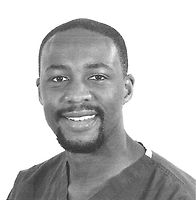Central Auckland, East Auckland, North Auckland, South Auckland, West Auckland > Private Hospitals & Specialists >
Auckland Colorectal Centre
Private Service, General Surgery
Today
9:00 AM to 5:00 PM.
Description
The Auckland Colorectal Centre is a group practice of colorectal (bowel) surgeons who specialise in the management of diseases of the colon, rectum and anus. All have trained in general surgery then had further training in this speciality (link for more information).
The colon and the rectum are part of the digestive tract that processes the food we eat. Together they make up the large intestine or large bowel and are located in the abdomen between the small intestine and the anus. The colon is about 1.8m long and absorbs water and salt from food. The rectum is the last segment of the large intestine and is about 12 - 15cm long. This is where waste material is stored before it passes out of the body through the anus.
Consultants
Note: Please note below that some people are not available at all locations.
-

Dr Wal (Wasilwa) Baraza
Colorectal Surgeon
Available at 17 Gilgit Road, Epsom, Auckland
-

Mr Julian Hayes
Colorectal Surgeon
Available at 17 Gilgit Road, Epsom, Auckland
-

Mr Lincoln Israel
Colorectal Surgeon
Available at all locations.
-

Mr Arend Merrie
Colorectal Surgeon
Available at 17 Gilgit Road, Epsom, Auckland
-

Ms Sze-Lin Peng
Colorectal Surgeon
Available at 17 Gilgit Road, Epsom, Auckland
-

Dr Parry (Primal) Singh
Colorectal Surgeon
Available at all locations.
Referral Expectations
Fees and Charges Description
Initial Consultation $330 - $540 incl GST
Follow up consultation $200 - $260 incl GST
Examinations often required in the Rooms -
Sigmoidoscopy $130
Proctoscopy $70
Examinations offered by Specialist Nurse -
Manometry $810
Endoanal Ultrasound $810
If there is a procedure of banding haemorrhoids undertaken there will be an additional cost of $460 incl GST
If surgery is required fees will be discussed after consultation.
Hours
9:00 AM to 5:00 PM.
| Mon – Fri | 9:00 AM – 5:00 PM |
|---|
Appointments are available throughout the week.
Mr Israel consults at 123 Ormiston Road on Wednesday mornings, fortnightly. Please phone (09) 623 7410 to arrange an appointment (at either location).
Procedures / Treatments
This is a cancer that begins in your colon or rectum. Often it may start as a polyp which is a growth of abnormal tissue on the lining of the colon or rectum. Most people will not have symptoms of colorectal cancer until the disease is at a fairly advanced stage. Then they may experience symptoms such as: change in bowel habit that lasts for more than a few days blood in the stool stomach pain. Tests used to confirm a diagnosis of colorectal cancer include: sigmoidoscopy colonoscopy barium enema – a chalky white substance (barium) and air are pumped into the colon and x-rays are taken biopsy – a small piece of tissue is removed for examination under a microscope. Treatment The choice of treatment depends on your overall health as well as how far advanced the cancer is. This is determined in a process known as ‘staging’ in which the tumour size, lymph node involvement and spread to other organs is assessed. The three main forms of treatment for colorectal cancer are: Surgery – the most common treatment. Surgery may involve ‘Open Surgery’ in which a large incision (cut) is made in your abdomen or ‘Laparoscopic Surgery’ in which several much smaller incisions are made. The section of the colon or rectum with the cancer is removed and the two ends are reconnected. In some cases, a temporary or permanent colostomy may be required to remove body wastes. Chemotherapy – anticancer medicines, either taken by mouth (oral) or injected into a vein (intravenous), can destroy cancer cells and slow tumour growth. Chemotherapy is useful to treat cancers that have spread to other parts of the body and may also be used before or after surgery or in combination with radiation therapy. Radiation Therapy – high energy x-rays are used to destroy cancer cells or shrink tumours. It is often used together with surgery, in some cases to shrink the tumour before surgery, or to destroy any cells that may be left behind after surgery. Link for further information
This is a cancer that begins in your colon or rectum. Often it may start as a polyp which is a growth of abnormal tissue on the lining of the colon or rectum. Most people will not have symptoms of colorectal cancer until the disease is at a fairly advanced stage. Then they may experience symptoms such as: change in bowel habit that lasts for more than a few days blood in the stool stomach pain. Tests used to confirm a diagnosis of colorectal cancer include: sigmoidoscopy colonoscopy barium enema – a chalky white substance (barium) and air are pumped into the colon and x-rays are taken biopsy – a small piece of tissue is removed for examination under a microscope. Treatment The choice of treatment depends on your overall health as well as how far advanced the cancer is. This is determined in a process known as ‘staging’ in which the tumour size, lymph node involvement and spread to other organs is assessed. The three main forms of treatment for colorectal cancer are: Surgery – the most common treatment. Surgery may involve ‘Open Surgery’ in which a large incision (cut) is made in your abdomen or ‘Laparoscopic Surgery’ in which several much smaller incisions are made. The section of the colon or rectum with the cancer is removed and the two ends are reconnected. In some cases, a temporary or permanent colostomy may be required to remove body wastes. Chemotherapy – anticancer medicines, either taken by mouth (oral) or injected into a vein (intravenous), can destroy cancer cells and slow tumour growth. Chemotherapy is useful to treat cancers that have spread to other parts of the body and may also be used before or after surgery or in combination with radiation therapy. Radiation Therapy – high energy x-rays are used to destroy cancer cells or shrink tumours. It is often used together with surgery, in some cases to shrink the tumour before surgery, or to destroy any cells that may be left behind after surgery. Link for further information
- change in bowel habit that lasts for more than a few days
- blood in the stool
- stomach pain.
- sigmoidoscopy
- colonoscopy
- barium enema – a chalky white substance (barium) and air are pumped into the colon and x-rays are taken
- biopsy – a small piece of tissue is removed for examination under a microscope.
Colonoscopy is the examination of your colon (large bowel) using a colonoscope (long, flexible tube with a camera on the end). The colonoscope is passed into your rectum (bottom) and then moved slowly along the entire colon, while images from the camera are displayed on a television monitor. The procedure takes from 10 minutes to an hour. Sometimes a small tissue sample (biopsy) will need to be taken during the procedure for later examination at a laboratory. A colonoscopy may help diagnose conditions such as polyps (small growths of tissue projecting into the bowel), tumours, ulcerative colitis (inflammation of the colon) and diverticulitis (inflammation of sacs that form on the walls of the colon). Colonoscopy may also be used to remove polyps in the colon. Risks of a colonoscopy are rare but include: bleeding if a biopsy is performed, allergic reaction to the sedative and perforation (tearing) of the bowel wall. What to expect It is important that the bowel is completely empty before the procedure takes place. This means that you will only be able to have liquids on the day before, and will have to take some oral laxative medication (to make you go to the toilet more). When you are ready for the procedure, you will be given medication (a sedative) to make you go into a light sleep. This will be given by an injection into a vein in your arm or hand. The colonoscopy will usually take 15 – 30 minutes, but you will probably sleep for another 30 minutes. Because you have been sedated (given medication to make you sleep) it is important that you arrange for someone else to drive you home. Some patients may experience discomfort after the procedure, due to air remaining in the colon. Link to more information
Colonoscopy is the examination of your colon (large bowel) using a colonoscope (long, flexible tube with a camera on the end). The colonoscope is passed into your rectum (bottom) and then moved slowly along the entire colon, while images from the camera are displayed on a television monitor. The procedure takes from 10 minutes to an hour. Sometimes a small tissue sample (biopsy) will need to be taken during the procedure for later examination at a laboratory. A colonoscopy may help diagnose conditions such as polyps (small growths of tissue projecting into the bowel), tumours, ulcerative colitis (inflammation of the colon) and diverticulitis (inflammation of sacs that form on the walls of the colon). Colonoscopy may also be used to remove polyps in the colon. Risks of a colonoscopy are rare but include: bleeding if a biopsy is performed, allergic reaction to the sedative and perforation (tearing) of the bowel wall. What to expect It is important that the bowel is completely empty before the procedure takes place. This means that you will only be able to have liquids on the day before, and will have to take some oral laxative medication (to make you go to the toilet more). When you are ready for the procedure, you will be given medication (a sedative) to make you go into a light sleep. This will be given by an injection into a vein in your arm or hand. The colonoscopy will usually take 15 – 30 minutes, but you will probably sleep for another 30 minutes. Because you have been sedated (given medication to make you sleep) it is important that you arrange for someone else to drive you home. Some patients may experience discomfort after the procedure, due to air remaining in the colon. Link to more information
Colonoscopy is the examination of your colon (large bowel) using a colonoscope (long, flexible tube with a camera on the end). The colonoscope is passed into your rectum (bottom) and then moved slowly along the entire colon, while images from the camera are displayed on a television monitor. The procedure takes from 10 minutes to an hour. Sometimes a small tissue sample (biopsy) will need to be taken during the procedure for later examination at a laboratory.
A colonoscopy may help diagnose conditions such as polyps (small growths of tissue projecting into the bowel), tumours, ulcerative colitis (inflammation of the colon) and diverticulitis (inflammation of sacs that form on the walls of the colon).
Colonoscopy may also be used to remove polyps in the colon.
Risks of a colonoscopy are rare but include: bleeding if a biopsy is performed, allergic reaction to the sedative and perforation (tearing) of the bowel wall.
What to expect
It is important that the bowel is completely empty before the procedure takes place. This means that you will only be able to have liquids on the day before, and will have to take some oral laxative medication (to make you go to the toilet more).
When you are ready for the procedure, you will be given medication (a sedative) to make you go into a light sleep. This will be given by an injection into a vein in your arm or hand.
The colonoscopy will usually take 15 – 30 minutes, but you will probably sleep for another 30 minutes. Because you have been sedated (given medication to make you sleep) it is important that you arrange for someone else to drive you home.
Some patients may experience discomfort after the procedure, due to air remaining in the colon.
Link to more information
A long, narrow tube with a light attached (sigmoidoscope) is inserted into your anus and moved through your rectum (bowel). This allows the surgeon a view of the lining of the lower large intestine. If necessary, a biopsy (small piece of tissue) may be taken for examination in the laboratory.
A long, narrow tube with a light attached (sigmoidoscope) is inserted into your anus and moved through your rectum (bowel). This allows the surgeon a view of the lining of the lower large intestine. If necessary, a biopsy (small piece of tissue) may be taken for examination in the laboratory.
A perianal fistula is a collection of pus under the skin next to the anal canal (back passage). It is usually caused by an infection of the glands of the anal canal. This presents as a painful lump in the area and may be associated with a fever. The treatment involves drainage of the pus usually by operation. Some of these infections go on to form a longstanding fistula (a track running from the skin near the anus to the inside of the anal canal). These intermittently swell and discharge pus and blood. The treatment involves surgery to either open the track to the skin or close the inside opening. Link for more information
A perianal fistula is a collection of pus under the skin next to the anal canal (back passage). It is usually caused by an infection of the glands of the anal canal. This presents as a painful lump in the area and may be associated with a fever. The treatment involves drainage of the pus usually by operation. Some of these infections go on to form a longstanding fistula (a track running from the skin near the anus to the inside of the anal canal). These intermittently swell and discharge pus and blood. The treatment involves surgery to either open the track to the skin or close the inside opening. Link for more information
A perianal fistula is a collection of pus under the skin next to the anal canal (back passage). It is usually caused by an infection of the glands of the anal canal. This presents as a painful lump in the area and may be associated with a fever. The treatment involves drainage of the pus usually by operation. Some of these infections go on to form a longstanding fistula (a track running from the skin near the anus to the inside of the anal canal). These intermittently swell and discharge pus and blood. The treatment involves surgery to either open the track to the skin or close the inside opening.
Haemorrhoids are a condition where the cushion of veins in the lining of the anus are congested and enlarged. Less severe haemorrhoids can be managed with simple treatments such as injection or banding which can be performed in the clinic while larger ones may require surgery. Link for further information
Haemorrhoids are a condition where the cushion of veins in the lining of the anus are congested and enlarged. Less severe haemorrhoids can be managed with simple treatments such as injection or banding which can be performed in the clinic while larger ones may require surgery. Link for further information
Haemorrhoids are a condition where the cushion of veins in the lining of the anus are congested and enlarged. Less severe haemorrhoids can be managed with simple treatments such as injection or banding which can be performed in the clinic while larger ones may require surgery.
An anal fissure is a split of the skin of the anal canal (back passage) that causes bleeding or pain on passing a bowel motion. Most of these can be healed by a careful diet, pain relief and medication to relax the anal muscles. A minority of patients require surgery. Link for more information
An anal fissure is a split of the skin of the anal canal (back passage) that causes bleeding or pain on passing a bowel motion. Most of these can be healed by a careful diet, pain relief and medication to relax the anal muscles. A minority of patients require surgery. Link for more information
An anal fissure is a split of the skin of the anal canal (back passage) that causes bleeding or pain on passing a bowel motion. Most of these can be healed by a careful diet, pain relief and medication to relax the anal muscles. A minority of patients require surgery.
There are two types of IBD, ulcerative colitis and Crohn’s disease. In these conditions, the immune system attacks the lining of the colon causing inflammation and ulceration, bleeding and diarrhoea. In ulcerative colitis this only involves the large intestine, whereas in Crohn’s disease areas within the entire intestine can be involved. Both diseases are chronic (long term) with symptoms coming (relapse) and going (remission) over a number of years. Symptoms depend on what part of the intestine is involved but include: abdominal pain diarrhoea with bleeding tiredness fevers infections around the anus (bottom) weight loss can occur if the condition has been present for some time. Diagnosis is made when the symptoms, examination and blood tests suggest inflammatory bowel disease, infection is ruled out, and you undergo a colonoscopy with biopsy. Treatment depends on the severity of the symptoms and what part of the intestine is affected. Medication is aimed at suppressing the immune system, which is harming the lining of the bowel. This is done via oral or intravenous medication as well as medication given as an enema (via the bottom). Other treatments include changes in the diet to optimise nutrition and health. Treatment in some cases requires surgery to remove affected parts of the bowel. Link for more information about Crohn's disease Link for more information about Ulcerative Colitis Link for patient support group http://crohnsandcolitis.org.nz/
There are two types of IBD, ulcerative colitis and Crohn’s disease. In these conditions, the immune system attacks the lining of the colon causing inflammation and ulceration, bleeding and diarrhoea. In ulcerative colitis this only involves the large intestine, whereas in Crohn’s disease areas within the entire intestine can be involved. Both diseases are chronic (long term) with symptoms coming (relapse) and going (remission) over a number of years. Symptoms depend on what part of the intestine is involved but include: abdominal pain diarrhoea with bleeding tiredness fevers infections around the anus (bottom) weight loss can occur if the condition has been present for some time. Diagnosis is made when the symptoms, examination and blood tests suggest inflammatory bowel disease, infection is ruled out, and you undergo a colonoscopy with biopsy. Treatment depends on the severity of the symptoms and what part of the intestine is affected. Medication is aimed at suppressing the immune system, which is harming the lining of the bowel. This is done via oral or intravenous medication as well as medication given as an enema (via the bottom). Other treatments include changes in the diet to optimise nutrition and health. Treatment in some cases requires surgery to remove affected parts of the bowel. Link for more information about Crohn's disease Link for more information about Ulcerative Colitis Link for patient support group http://crohnsandcolitis.org.nz/
There are two types of IBD, ulcerative colitis and Crohn’s disease. In these conditions, the immune system attacks the lining of the colon causing inflammation and ulceration, bleeding and diarrhoea. In ulcerative colitis this only involves the large intestine, whereas in Crohn’s disease areas within the entire intestine can be involved. Both diseases are chronic (long term) with symptoms coming (relapse) and going (remission) over a number of years.
Symptoms depend on what part of the intestine is involved but include:
- abdominal pain
- diarrhoea with bleeding
- tiredness
- fevers
- infections around the anus (bottom)
- weight loss can occur if the condition has been present for some time.
Diagnosis is made when the symptoms, examination and blood tests suggest inflammatory bowel disease, infection is ruled out, and you undergo a colonoscopy with biopsy.
Treatment depends on the severity of the symptoms and what part of the intestine is affected. Medication is aimed at suppressing the immune system, which is harming the lining of the bowel. This is done via oral or intravenous medication as well as medication given as an enema (via the bottom). Other treatments include changes in the diet to optimise nutrition and health. Treatment in some cases requires surgery to remove affected parts of the bowel.
Link for more information about Crohn's disease
Link for more information about Ulcerative Colitis
Link for patient support group http://crohnsandcolitis.org.nz/
An opening is made in the skin of the abdomen (stomach) to allow drainage of stools (faeces) from the colon into a collection bag on the outside. This may be temporary to allow time for healing of the colon or, if the rectum and anal canal has been removed, it may be permanent.
An opening is made in the skin of the abdomen (stomach) to allow drainage of stools (faeces) from the colon into a collection bag on the outside. This may be temporary to allow time for healing of the colon or, if the rectum and anal canal has been removed, it may be permanent.
Faecal incontinence is the inability to adequately control bowel motions and wind. There are many causes for this disability with different treatments. A careful assessment from questions about symptoms and an examination supplemented by other tests will usually identify the cause. Treatment may involve surgery, physiotherapy, medication or a combination of these.
Faecal incontinence is the inability to adequately control bowel motions and wind. There are many causes for this disability with different treatments. A careful assessment from questions about symptoms and an examination supplemented by other tests will usually identify the cause. Treatment may involve surgery, physiotherapy, medication or a combination of these.
Parking
Free patient parking is provided at all locations
Website
Contact Details
17 Gilgit Road, Epsom, Auckland
Central Auckland
9:00 AM to 5:00 PM.
-
Phone
(09) 623 7410
-
Fax
(09) 623 7411
Healthlink EDI
aklcolor
Email
Website
123 Ormiston Road, Flat Bush, Auckland
South Auckland
9:00 AM to 5:00 PM.
-
Phone
(09) 623 7410
-
Fax
(09) 623 7411
Healthlink EDI
aklcolor
Email
Website
Was this page helpful?
This page was last updated at 9:55AM on November 29, 2023. This information is reviewed and edited by Auckland Colorectal Centre.

